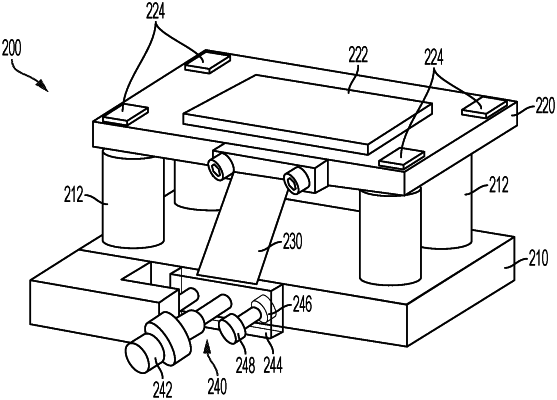| CPC F28F 13/00 (2013.01) [G01P 1/023 (2013.01); G01P 15/02 (2013.01); F28F 2013/006 (2013.01); F28F 2013/008 (2013.01)] | 17 Claims |

|
1. A system for sensor thermal management and stabilization, the system comprising:
a sensor block having an upper surface and an opposing lower surface;
one or more sensors mounted on the upper surface of the sensor block;
a plurality of heaters mounted on the upper surface of the sensor block, the plurality of heaters separated from the one or more sensors by the sensor block;
a plurality of thermal isolator structures coupled to the lower surface of the sensor block:
a chassis coupled to the plurality of thermal isolator structures such that the chassis is separated from the sensor block;
a thermal conductor moveably coupled between the sensor block and the chassis, the thermal conductor comprising at least one flexible thermally conductive strap; and
a thermal control actuation mechanism connected to the thermal conductor and to the chassis, the thermal control actuation mechanism including an actuator, a terminal block coupled to the at least one flexible thermally conductive strap and the actuator, and at least one spring engaged with the terminal block, the at least one spring coupled to the chassis;
wherein each of the plurality of heaters is respectively located on the upper surface of the sensor block opposite a respective one of the plurality of thermal isolator structures:
wherein the thermal control actuation mechanism is operative to cause the thermal conductor to vary a total thermal conductance from the sensor block to the chassis by moving the thermal conductor toward the chassis or away from the chassis;
wherein the total thermal conductance is varied to provide an optimized thermal stability and optimized environmental range of applicability for the one or more sensors.
|